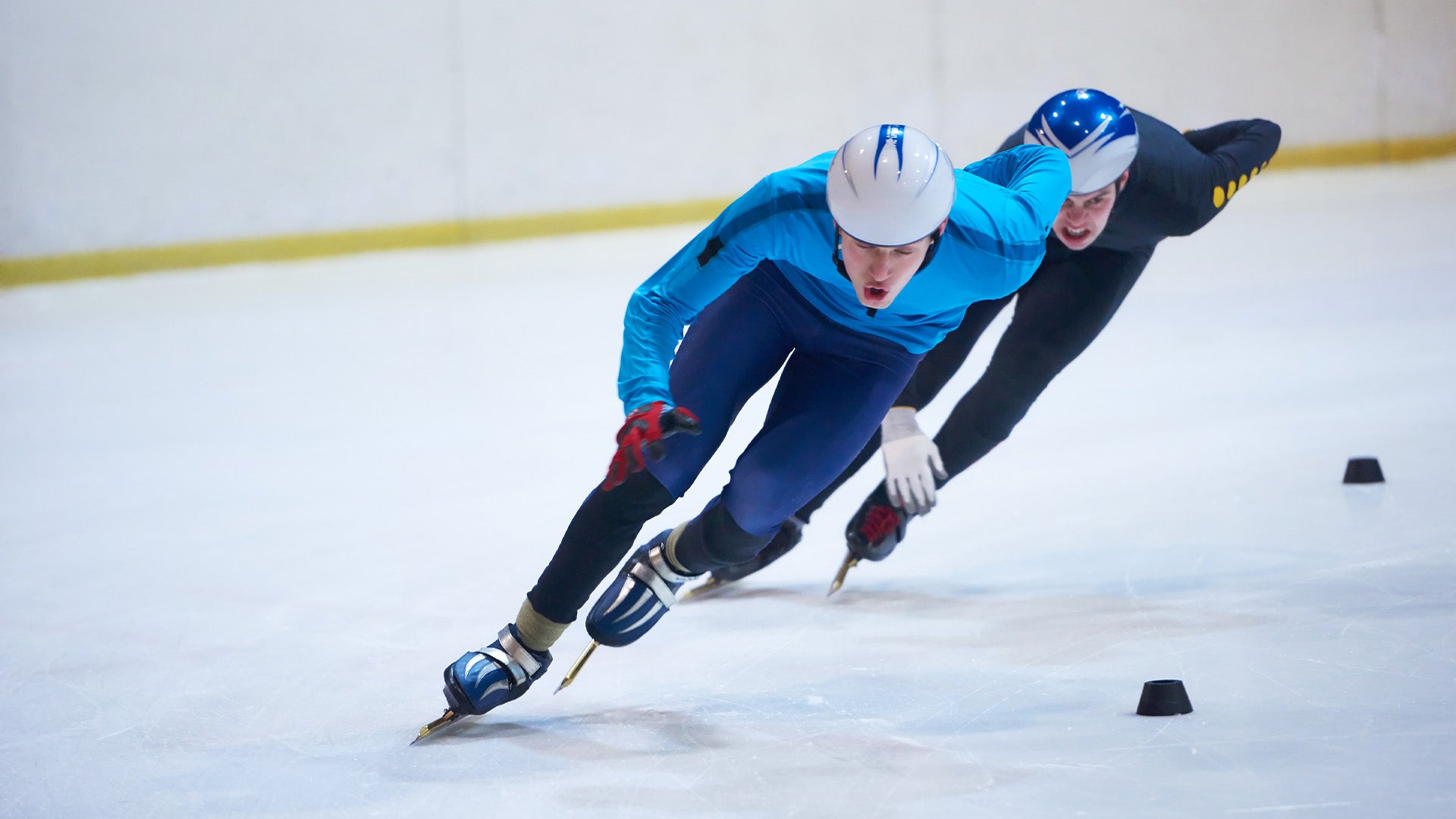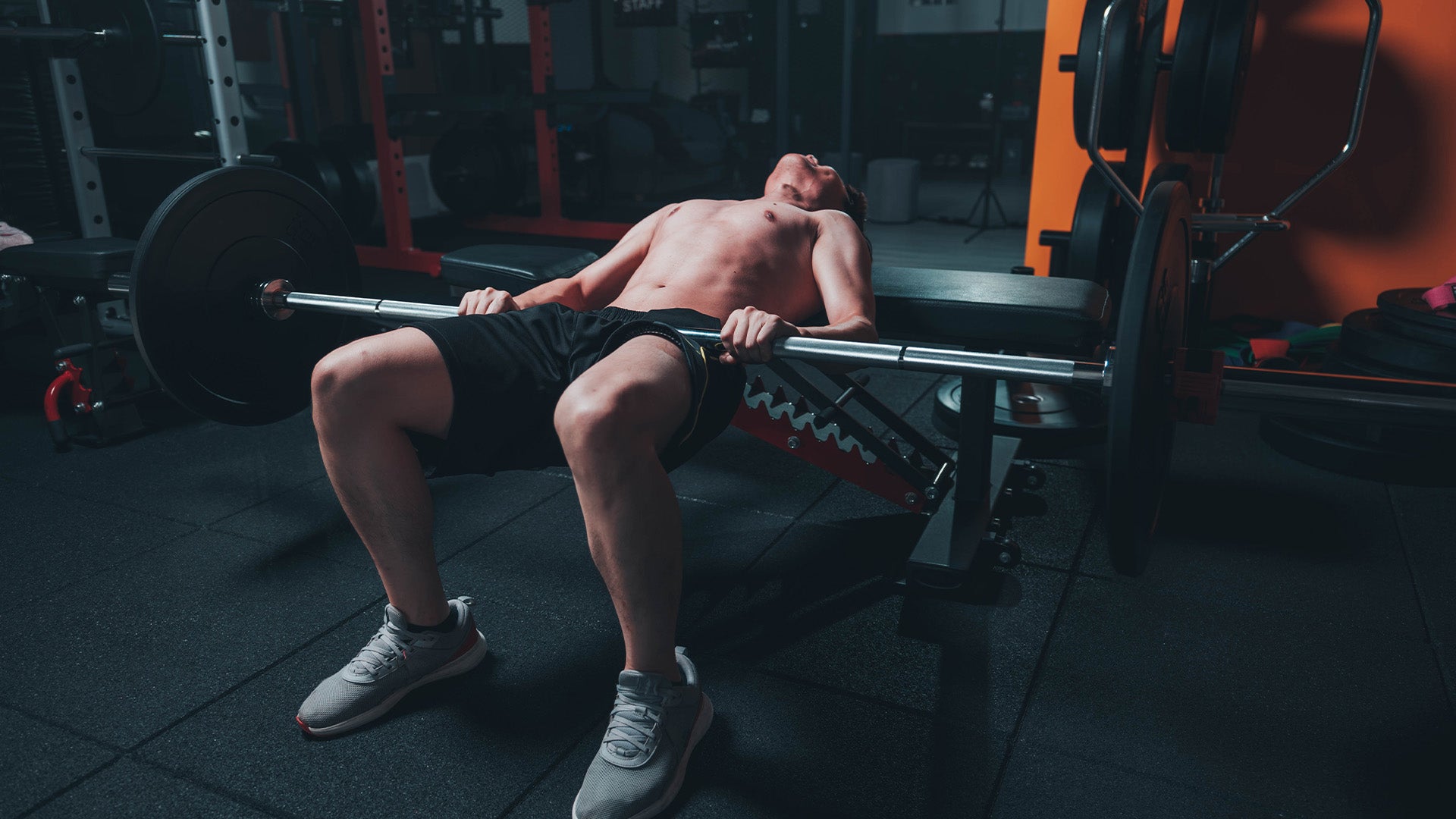Hockey is a high-contact sport that requires you to make use of pretty much every muscle in the body. And outside of being a full-body workout, it also requires you to have amazing agility, speed, coordination, and everything in between.
With that said, it’s also a sport prone to many injuries, so incorporating a comprehensive training program into your routine can address shortcomings and improve your performance on the ice. Here are some of the best workouts for hockey players.
What Should Hockey Players Focus on in Training?
Hockey is composed of dynamic movements that are unlike any other sport. It requires strength and stability in the lower body to move quickly and effectively on the ice, but it also requires upper body strength to defend against opponents while also being able to shoot the puck easily.
With this in mind, hockey players should focus on building cardiovascular endurance to maintain speed on the ice while also focusing on strength training in both the upper and lower body. It’s also a great idea to incorporate “rehearsal” moves that mimic movement patterns you might see while in the rink.
1. Cardiovascular Training for Hockey

Cardio has multiple health benefits overall, but for hockey players, the goal is to increase your aerobic capacity so you can maintain energy for longer periods of time while on the ice.
Speed Skaters
Since your sport requires ice skating, what better way to practice than with an exercise that mimics that exact movement pattern? Speed skaters not only work to build up cardiovascular endurance, but they also help with hip stability, glute strength, and quad strength to build up your skills overall.
Similar to actual skating, you’ll hop onto one foot, driving the opposite foot back behind you, hinging at the hips – just like you’re skating on ice. You can tap that back foot onto the floor if you’re still working on the real move, or you can hold a medicine ball to progress this move even further.
Wood Chops
Wood chops are a great hybrid between cardio and strength training, making it a great compound movement for hockey training. One of the main benefits of wood chops is that they help strengthen the obliques and erector spinae, which can prevent some of the more common hockey injuries related to swinging the stick too violently.
You can do wood chops with a dumbbell or a resistance tube attached at an anchor point. The key is keeping your elbows slightly bent and pivoting the back leg when you drive the weight down to your waist. You can also do reverse wood chops by having the weight start at the waist and finish above your shoulders.
Forward and Back Sprints
While sprints themselves are perfect for building up cardio capacity, the main reason that forward and back sprints lend themselves to a hockey training routine is that they can help you practice quickly changing direction. This happens often in hockey, as you might need to move back and forth frequently. Forward and back sprints help you build glute and calf strength to reduce the risk of injury during directional shifts.
When doing this exercise, you can set up cones to be the exact length of a hockey court (200 feet) to better prepare for an actual game.
2. Strength Training for Hockey

Cardio training can help you improve at hockey, but strength training is where injury prevention starts to build up. A comprehensive strength training plan for hockey players is essential to play a safe and effective game.
Hip Thrusts
One of the most important postural muscles for hockey players is the glutes. Ice skating requires a lot of balance and directional change – and the glutes and hips are primarily responsible for these actions.
Hip thrusts are one of the best exercises for targeting the glutes and hip muscles. You can use dumbbells, sandbags, barbells, or pretty much any piece of equipment when doing this move.
The trick here is to manage how far away your feet are from your glutes. The closer your feet are to your glutes, the more you activate the quads. The further away they are, the more you’ll activate the hamstrings. So you might need to work to find the happy medium where your glutes are working full force.
Bench Press
Having a strong upper body is just as important as a strong lower body for hockey players, and building a bulky chest is necessary for being able to take harsh blows from opponents while on the ice. It’s especially important as a goalie, since a strong chest helps prevent injuries from being hit by pucks at lightning-fast speeds.
There’s a reason why the bench press is one of the most popular upper-body movements in existence. It targets the chest for maximum gains, but it also targets the shoulders and triceps to give them some love as well. The only problem with a chest press is that with traditional dumbbells or barbells, you lose some muscle contraction at the height of the move.
You’re making the most progress on a bench press during the middle of the range of motion as you lift the weight toward the sky. At the top of the move, your muscles exert less force. This is called the strength curve, and it happens when a muscle uses less exertion at different angles in a range of motion.
This is unavoidable with traditional training, but with Speede, revolutionary AI tech can adjust to your strength curve to give you the most powerful workout imaginable. Your resistance will change, but the velocity of motion will remain the same. Essentially, you’ll always be using the most challenging weight at every portion of the move without ever needing to drop the weight and restart.
Book a demo today and learn how to get closer to your goals in just a fraction of the time.
Bulgarian Split Squats
Never skip leg day, especially if you’re a hockey player. While having strong postural muscles like the glutes and the back are important, it’s also important to have strong quads. Bulgarian split squats target the quads, as well as the glutes, in ways that many other exercises simply can’t match.
Bulgarian split squats are just regular split squats, except your back foot is elevated on top of a bench. This forces more activation on your working foot while also emphasizing balance and stability at the hips. For hockey players, it’s necessary to strengthen these muscles because it can help you stay stable when hit by an opponent.
Pull-Ups
If you want to enhance your shot power every time you make your way to the goal, you’ll need more strength in your lats. There aren’t many exercises that can do that better than the classic pull-up.
Use a wide grip on the pull-up bar to target the lats specifically, and make sure you’re using slow and controlled movements from the top of the bottom. If you’re still working up to pull-ups, you can do lat pulldowns with Speede to maximize depth in your lats quickly so you can start doing pull-ups easily.
You can also take a more narrow grip with pull-ups to make them easier. This will target the biceps a little bit more, but it will still effectively target the muscles, which will help with shot power and accuracy.
In Conclusion
Hockey players are involved in one of the most high-contact and injury-prone sports. For that reason, a proper, balanced training routine is essential for becoming the best (and safest) player on the ice.
Hockey players should try to focus their efforts on a mix of cardiovascular training and strength training. Cardio training can help endurance, while strength training can pinpoint shot accuracy and injury prevention.
Reach your results faster than ever with a revolutionary new piece of equipment that can adjust to your body’s strengths and areas of improvement. With four different modes, you’ll never need a gym membership again.
Learn more about Speede today to see how we can help supercharge your hockey training.
Sources:
The (Many) Benefits of a Cardio Workout | Cleveland Clinic

